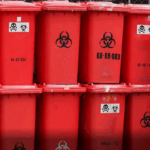Environmentally Friendly Incinerators for Kenya’s Health Sector: HICLOVER TS200
Introduction: The Need for Sustainable Waste Treatment in Kenya
Kenya’s health sector continues to expand, with new county hospitals, referral centers, and donor-funded clinics opening across Nairobi, Kisumu, Eldoret, and coastal regions. With this expansion comes an urgent need for environmentally friendly incinerators in Kenya’s health sector, ensuring safe disposal of hazardous medical waste while complying with national environmental regulations.
Traditional waste disposal methods often lead to incomplete combustion, smoke, and environmental concerns. Modern incineration systems like those from HICLOVER provide cleaner, more reliable solutions designed to meet Kenya’s unique healthcare demands.
Incinerator with Backup Spare Parts Kits for Reliable Operation
One of the biggest challenges for hospitals in Kenya is the long-term maintenance of medical waste treatment equipment. Many imported systems fail due to lack of service support or unavailable parts. HICLOVER addresses this by supplying incinerators with backup spare parts kits for Kenya healthcare supply, ensuring uninterrupted operation. Spare kits typically include burners, refractory tiles, temperature sensors, fans, and PLC components, reducing downtime in critical hospital settings.
Automatic Ash Removal for Hospital Efficiency
In busy facilities such as Nairobi referral hospitals and county-level medical centers, manual cleaning of incinerators consumes valuable time and exposes workers to risks. The HICLOVER TS250 model offers an incinerator with automatic ash removal for Kenya hospitals, enabling efficient, hygienic, and labor-saving waste management. This feature is particularly attractive to hospitals under donor-funded programs, where operational safety and staff protection are top priorities.
HICLOVER TS200: Containerized and Mobile Design
The TS200 incinerator is engineered for high-capacity medical waste treatment:
-
Capacity: 200 kg/hour burn rate
-
Primary Chamber: 2,000 liters with high-quality refractory lining
-
Secondary Chamber: ≥1100°C with ≥2 seconds retention time for complete flue gas destruction
-
PLC Automated Control: Automated ignition, air distribution, and monitoring with built-in safety interlocks
-
Containerized Option: Pre-installed in 20ft or 40ft ISO containers, ideal for rapid deployment in rural Kenya or cross-border aid projects
-
Emission Control Options: Wet scrubber, quench tower, defogging tower, activated carbon dosing, and baghouse filtration for projects requiring advanced air quality compliance
Applications in Kenya and East Africa
-
County Hospitals: On-site treatment eliminates the need for costly transport of infectious waste.
-
Donor-Funded Clinics: Systems meet NEMA compliance and WHO recommendations.
-
Refugee Camps and Humanitarian Programs: Mobile and containerized designs can be deployed in Garissa, Turkana, and across East Africa where healthcare projects are supported by international aid.
-
Private Healthcare Facilities: Automatic ash removal and spare parts support provide long-term operational stability.
Conclusion
The deployment of environmentally friendly incinerators for Kenya’s health sector, combined with features such as backup spare parts kits and automatic ash removal for hospitals, positions HICLOVER as a leading partner in sustainable waste management. With the TS200 containerized incinerator, healthcare providers in Kenya and East Africa can achieve reliable, compliant, and safe biomedical waste disposal.
For detailed specifications and procurement support:
www.hiclover.com
sales@hiclover.com









